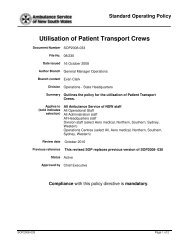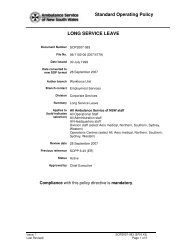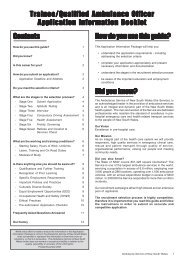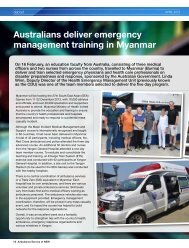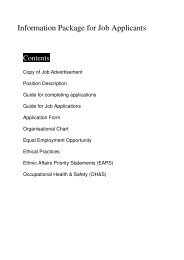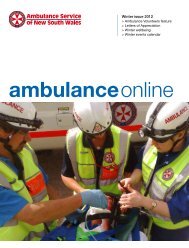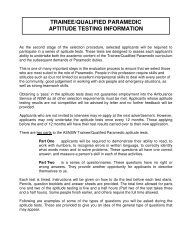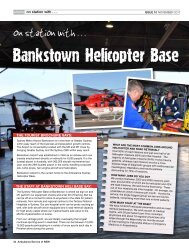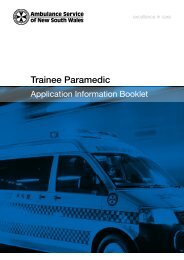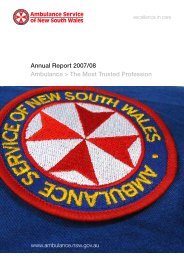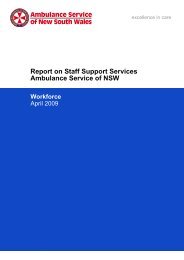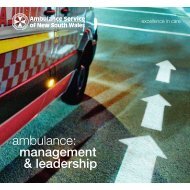atsb final report released 16 may 2013 - Ambulance Service of NSW
atsb final report released 16 may 2013 - Ambulance Service of NSW
atsb final report released 16 may 2013 - Ambulance Service of NSW
You also want an ePaper? Increase the reach of your titles
YUMPU automatically turns print PDFs into web optimized ePapers that Google loves.
communications were controlled by the ACM via the winch operator’s controlpanel (Figure 10) and an ICS control panel (Figure 15).Figure 15: Winch operator ICS control panelSource: ATSBWith the switch located on the winch operator control panel set to ICS, the ACMwas able to use either a voice activated (VOX) microphone or a switch on the winchcontrol pendant to communicate via the ICS. With the winch operator control panelset to RADIO, the ACM could use the switch on the winch control pendant tocommunicate externally via the radio that was selected on the ICS control panel.Maintenance historyA review <strong>of</strong> the helicopter’s maintenance documentation identified that, at the time<strong>of</strong> the accident, all <strong>of</strong> the required maintenance on the helicopter and its rescuewinch had been completed. In addition, all <strong>of</strong> the necessary servicing on the winchafter the accident, and in support <strong>of</strong> the 995 winch cycles carried out between thetime <strong>of</strong> the accident and 26 March <strong>2013</strong> were carried out with no faults found.During the course <strong>of</strong> the investigation, an Emergency Airworthiness Directive (AD)was issued by the European Aviation Safety Agency (EASA) in response to thefailure <strong>of</strong> a winch overload clutch assembly during a ‘maximum load cycle’ thatwas being carried out as part <strong>of</strong> a maintenance test flight. An unintended winchcable run out resulted.The winch that sustained a clutch failure and contributed to the development <strong>of</strong> theEASA Emergency AD was <strong>of</strong> the same type as that fitted to VH-SYZ. 17EASA determined that, if not detected and corrected, this condition could lead t<strong>of</strong>urther cases <strong>of</strong> in-flight loss <strong>of</strong> the hoist load, possibly resulting in injury topersons on the ground or that were being winched at the time. A one-time loadcheck test was stipulated, with varying compliance times depending on the nature <strong>of</strong>the intended winch and the date <strong>of</strong> the respective versions <strong>of</strong> the AD.On 26 March <strong>2013</strong>, the operator complied with the winch load check testrequirements <strong>of</strong> the EASA AD on the winch that was installed in VH-SYZ on theday <strong>of</strong> the accident. No fault was found with the winch overload clutch assembly.17See http://ad.easa.europa.eu/ad/<strong>2013</strong>-0077R1- 20 -



